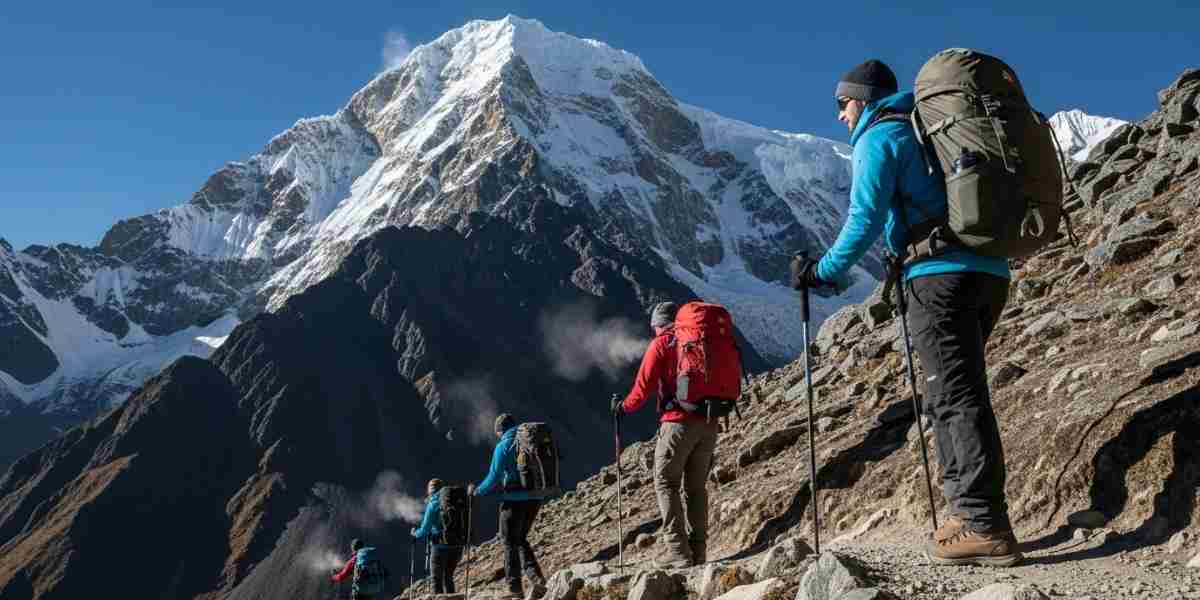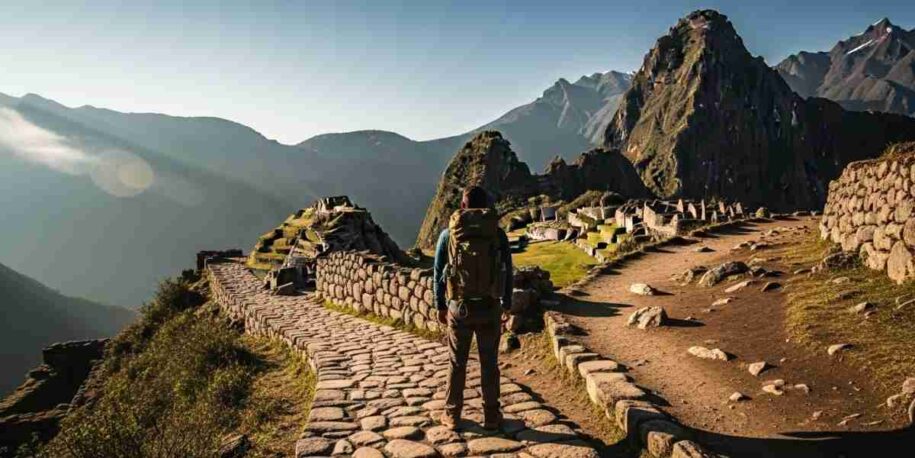Choosing between the Inca Trail vs. Salkantay Trek is one of the most significant decisions you’ll make when planning your journey to Peru. It’s a question we get constantly at our office in Cusco, and the answer isn’t about which one is “better,” but which one is profoundly better for you. One is a walk through history, a path laid by emperors. The other is a conversation with the wild, humbling power of the Andes. As logistical experts and seasoned guides, our role isn’t to sell you a tour, but to help you navigate this choice with clarity and confidence.
This isn’t just about getting to Machu Picchu. It’s about the journey that shapes your arrival. Let’s break down the real differences in scenery, difficulty, and atmosphere to help you find your path.
💡 Key Takeaway The choice boils down to this: The Classic Inca Trail is a pilgrimage through history, a trek along ancient stones with unparalleled archaeological access. The Salkantay Trek is a journey through epic, raw nature, dominated by a colossal mountain and diverse, dramatic landscapes.
The Soul of the Trail: Scenery and Atmosphere
This is where the two treks reveal their distinct personalities. You aren’t just choosing a path; you’re choosing the world you want to inhabit for four or five days.
The Classic Inca Trail experience is like walking through an open-air museum. The path itself is an artifact, a stone-laid testament to Inca engineering that winds through multiple microclimates. You’ll explore archaeological sites like Wiñay Wayna and Phuyupatamarca, places inaccessible by any other means. You are quite literally following in the footsteps of the Inca. The atmosphere is one of historical reverence, culminating in that iconic first glimpse of Machu Picchu from the Sun Gate (Inti Punku). A feeling no other trek can replicate.
The Salkantay Trek, by contrast, is an immersion in the sublime power of the Andean wilderness. Its soul is the colossal Apu Salkantay, a mountain revered by local communities, whose glaciated peak looms over you for the first two days.The scale is immense, almost overwhelming. After conquering the high pass, the world transforms. You descend from alpine tundra into a lush cloud forest, and then into the «eyebrow of the jungle,» where coffee beans grow and the air is thick with life. It’s a trek of dramatic contrasts. Raw. Untamed.
Inca Trail vs. Salkantay Trek: An Honest Comparison of the Routes
✅ Comparison: Trail Personality
Classic Inca Trail
- Pros: Direct access to numerous, exclusive Inca ruins. The unique experience of walking on the original, stone-paved path. The emotional climax of arriving at Machu Picchu through the Sun Gate at dawn.
- Cons: The scenery, while beautiful, is less dramatically varied day-to-day compared to Salkantay.
Salkantay Trek
- Pros: Breathtaking, diverse scenery ranging from the turquoise Humantay Lake to the glaciated 6,271-meter (20,574 ft) Salkantay Pass and down into the tropical jungle. A powerful sense of raw, untamed nature.
- Cons: Features fewer significant archaeological sites along the route itself. The arrival to Aguas Calientes is by foot or vehicle, lacking the dramatic Sun Gate entrance.

The Physical Question: Difficulty and Acclimatization
Both treks are serious undertakings and demand a good level of fitness and proper acclimatization in Cusco or the Sacred Valley. However, the nature of the challenge differs significantly.
The Inca Trail’s difficulty is often underestimated. It’s a route of a thousand stairs, particularly on Day Two as you ascend to the infamous Dead Woman’s Pass (Warmiwañusqa) at 4,215 meters (13,828 ft). The challenge is sustained, with significant ascents and descents on ancient, uneven stone steps. It’s a test of endurance and knees.
The Salkantay Trek difficulty is defined by one single, monumental day. The ascent to the Salkantay Pass at 4,630 meters (15,190 ft) is higher and more physically demanding than any point on the Inca Trail. It’s a slow, breathless grind where you feel the altitude with every step. However, once you conquer the pass, the remainder of the trek is predominantly downhill, becoming progressively easier as you descend into the oxygen-rich lower elevations.
✨ An Expert’s Perspective: Which ‘Hard’ is for You? I remember a client, a marathon runner, who found the Inca Trail’s endless steps more grueling than the single high-altitude push of Salkantay. Conversely, travelers who are strong hikers but struggle with extreme altitude might prefer the lower overall elevation profile of the Inca Trail. The question isn’t just «how difficult is it?» but «what kind of difficult suits my body?» Salkantay is a powerful peak challenge; the Inca Trail is a relentless endurance test.
Solitude vs. Camaraderie: The Question of Crowds
Your experience on the trail is also shaped by the people you share it with, or by their absence. This is perhaps the most straightforward difference between the two.
The Classic Inca Trail is strictly regulated. The Peruvian government issues a limited number of permits—about 500 per day, with more than half allocated to porters and guides. This means you won’t encounter crowds from other tour groups, but you will be sharing the trail and campsites with the other trekkers who started on the same day. It creates a unique sense of camaraderie, a shared pilgrimage. You move with a cohort. Because of this high demand and limited supply, booking the Classic Inca Trail requires reservations 6-12 months in advance.
The Salkantay Trek and other alternative treks to Machu Picchu have no such permit limitations. This offers incredible flexibility, often allowing for bookings just weeks or even days in advance. While you will encounter other trekkers, the trails are wider and the campsites more spread out, often allowing for a greater sense of solitude, especially during the shoulder seasons. For those seeking flexibility and a more independent feeling, the Salkantay Trek is an excellent choice.
So, which is the Right Trek for You? A Final Thought
There is no wrong answer. The real question is one of intent.
Choose the Inca Trail if your primary motivation is to connect with history, to walk a path imbued with ancient purpose, and to experience that singular, iconic arrival at Machu Picchu through the Sun Gate. It is the definitive historical pilgrimage.
Choose the Salkantay Trek if you are drawn by the call of the wild. If you desire epic landscapes, dramatic contrasts, and the humbling feeling of being dwarfed by the power of the Andes, this is your journey. It is the definitive alpine adventure.
Both paths lead to the wonder of Machu Picchu. But as any seasoned traveler knows, the destination is only half the story. The path you choose to walk there defines the memory you will carry home.
Your Journey, Tailored to Perfection
Thinking through these details is the first step. The next is ensuring the execution is flawless. A trek in the Andes is a complex logistical dance of permits, equipment, acclimatization, and expert guidance. That’s where we come in. We handle every detail with the passion and precision that only a dedicated team on the ground in Cusco can provide.

